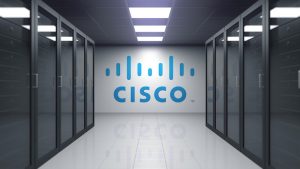Technology conglomerate Cisco is stepping into the networking-as-a-service (NaaS) market with the introduction of a flexible, consumption-based solution model for its services. The change is in line with an industry-wide transition to outsourcing enterprise network infrastructure needs, and the cessation of software and hardware sales as their own entities will clear the path for a business plan based on saving funds for both parties through usage-determined pricing.
The flagship of the endeavor, branded Cisco Plus Hybrid Cloud, is an amalgamation of Cisco’s superpowered data center, networking, and storage portfolios presented in a single consumption-based service. Third-party storage is said to be featured for this self-service model, hosted natively on Cisco CX Cloud. Cisco Plus will make the rounds in a limited release during the middle of the year in the U.S., U.K., Australia, Canada, Germany, and the Netherlands.
Next up will be the expansion of Secure Access Service Edge (SASE), a key ingredient in Cisco’s overall networking-as-a-service strategy. The cloud-housed security assessor contributes a bevy of safeguards, such as an expanded SD-WAN solution with Viptela and transparency practices incorporated from recent acquisition of ThousandEyes. SASE can also protect endpoints, mitigate data loss, detect malware on the cloud, and generate password-free authentication methods.
The concept of networking-as-a-service is to provision an interdependent vehicle for partners to operate and cultivate their network without the attached strings of infrastructure design and maintenance. Cisco trailed a bit when it came to throwing in with the NaaS boom, and ultimately made the leap based on the COVID-driven narrative of hybrid work becoming the new normal. Every product stack can also be an as-a-service stack, at the behest of Cisco’s in-house cloud computing team.
“This is a new business model that really brings the best of both worlds of Cisco, by integrating our hardware, software, and services, which provides limitless opportunities for the different partners,” said Alexandra Zagury, Cisco’s Vice President of Partner-Managed Services and XaaS Sales. “Customers are asking partners to not only integrate Cisco solutions, but to also deliver and operate them with managed services. So it’s no surprise that partners want further alignment with Cisco to meet the need for as-a-service IT. If you already have an as-a-service or managed-services practice, then the journey we’re taking to build Cisco Plus accelerates your opportunity.”
Time will tell if single-vendor franchises score subscriptions that meet the most optimistic expectations. Regardless, the NaaS model fosters interest in IT fine-tuning for a wide range of businesses, as quality-of-life and security improvements quickly become justifiable operational expenses when scale of service affects pricing.

























